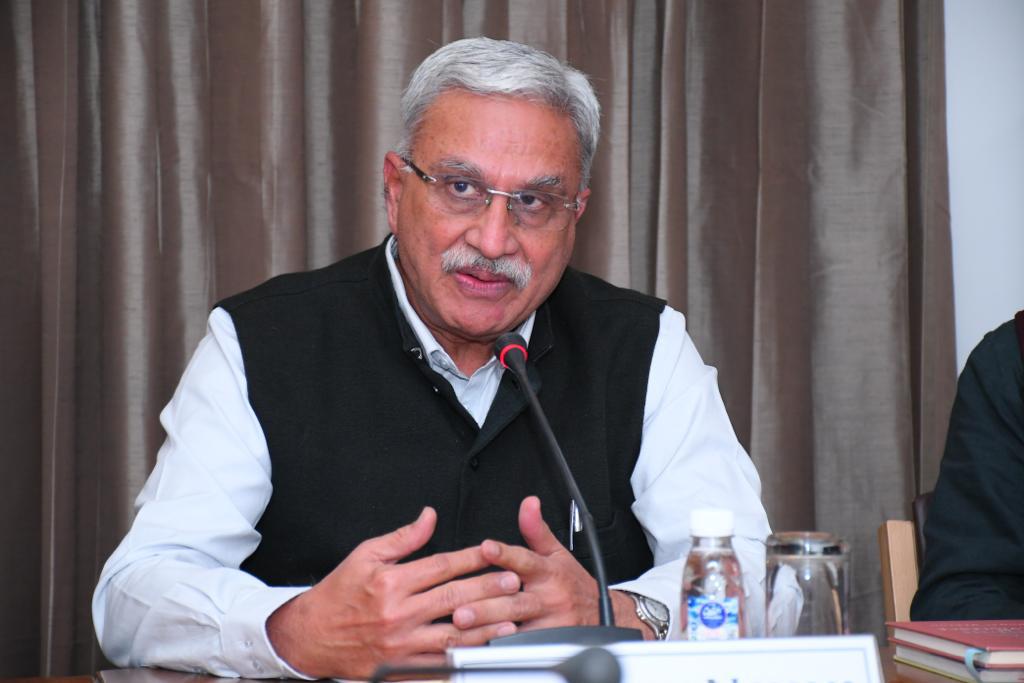
CLEANING AIR: Nayak played a key role in establishing Air Quality Index
The President of India has approved 132 Padma Awards, the highest civilian honours in the country, for the year 2024. These include five Padma Vibhushan, 15 Padma Bhushan and 110 Padma Shri.
The awards are given in various fields such as art, social work, public affairs, science and engineering, trade and industry, medicine, literature and education, sports, civil service, among others.
Three people from Delhi have been conferred the Padma Shri this year. Scientist Shailesh Nayak, an acclaimed oceanographer, is one of them. He made India’s first automated Tsunami Warning System and helped set up AQI (Air Quality Index) too.
Nayak is currently the Director of the National Institute of Advanced Studies in Bangalore and Chancellor of TERI School of Advanced Studies in New Delhi. He has published about 200 papers in peer-review journals.
Nayak talked to Patriot about his life and work.
When did you first hear about the award, and what was your reaction?
This is a good recognition and honour. It’s good because everybody recognised your work.
As you are an oceanographer and also work on tsunami warning systems, tell us something about it.
When tsunami hit for the first time in 2004, we were not prepared and around 20,000 people lost their lives. So, the Indian government decided to develop a tsunami warning system. At that time, I was in ISRO at that time and moved to the Indian National Centre for Ocean Information Services (INCOIS) to develop it. There is very little time to prepare for tsunamis. For example, it (tsunami) takes just two hours to reach Tamil Nadu and only 20-30 minutes to reach Andaman and Nicobar Islands. It was a challenge to make a system that can provide warning on time.
We also need to be sure before giving warning because if there is false alarm, people will stop believing us. So, we set up a tidal power station and a water pressure recorder, which tell us about the changes in sea level. We can confirm about the tsunami through this. Our model details the tsunami wave’s height and travel time every 50 kilometres. In the entire Indian Ocean, we are forecasting on around 1800 points. The communication system should also be strong in this process, which we have made. It took 13-14 minutes in this process in the beginning. The time decreased by 6-7 minutes after six months. Also, there is no false warning.
How much time did you take to develop this system and what challenges did you face?
We developed this in 18 months. Yes, it was very challenging. When I joined in 2006, the then minister told me that they wanted to inaugurate it on October 15, 2007. We managed to inaugurate it on the same date. It has been working properly for the last 15 years.
What benefits people get from this?
Now all (fishermen among others) feel safe and sure that they will be warned ahead of a tsunami. People in coastal areas have benefitted.
Tell us something about oceanography
Fisheries system and data, waves and currents, hazards and cyclones, changes in sea level due to recent climate change, minerals and oil are all included in oceanography. The biggest is the study about the process of controlling the system of ocean, weather and climate.
You also developed a system on ‘tuna fish’ in fisheries (ocean)
We made a system that tells fishermen about the place in the sea where the possibility of fish is more. It is based on satellite data. Firstly, this system reveals the temperature of the sea since the fish also move places according to temperature just like human beings want to go beneath trees for shelter during summer. Secondly, chlorine in the sea is a source of fish’s food and through it we find the fish. The system helps fishermen save time and fuel. It is very successful, and also beneficial for the environment. Around 90% of the fishermen use it. Sometimes, if fishermen cross the border in Gujarat and Tamil Nadu coastal areas, we inform them about this technique.
You also developed the AQI system. Tell us about it
There was an issue of pollution during the Commonwealth Games in 2010. So, the Indian Institute of Tropical Meteorology (IITM) under Gufran Beig developed a system, which provided information about the level of wind and pollution outside every stadium. It was first used in China during the Olympics and was necessary here too. It was very successful during the Commonwealth Games. It extended to other cities.
Your work has been recognised thanks to Padma Shri Award. What next?
I am busy with many projects now. The blue economy will expand, and after 2030 we will depend more on the ocean. Already we are dependent on the ocean for fisheries, petroleum, and other products but we need to explore it further for metals, renewable energy and other things. In fisheries, our range is only 200 metres but we need to go to 2,000 metres. Tourism in the ocean is also booming. Thermal energy experiment is also ongoing. The most important aspect of the ocean is shipping, so development of ports and ecosystems is also important in future.
The World Cup winner was scheduled to reach the capital this morning for his final…
The actor says the psychological thriller focuses on emotion, character and storytelling, not shock value,…
Court takes note of poor implementation of anti-pollution measures as Delhi’s AQI remains in ‘severe’…
Multi-layered security and traffic restrictions put in place around Arun Jaitley Stadium as Argentine football…
The air quality was 'severe' at 38 stations while it was 'very poor' at two…
Delhi to create geo-mapped farmland and farmer registry under a Centre-backed scheme for transparent benefit…